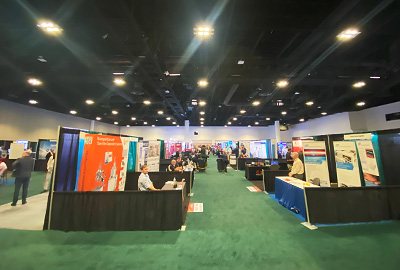
The AVS 70th International Symposium and Exhibition, held in Tampa, Florida, from November 3-8, 2024, focused on advancing materials, processing, and interface science under the theme "Innovating Sustainability: Next Generation Energy and Quantum Devices and Their Characterization." The event featured over 1,200 presentations, including specialized sessions, tutorials, and a Flash Presentation Session, covering topics such as sustainability, quantum technology, and nanotechnology. It also included an extensive exhibition showcasing cutting-edge tools, materials, and services, providing opportunities for networking, collaboration, and exploration of the latest advancements in the field.



I presented the advanced evaluation of sub-nanometer (sub-nm) surface roughness using Reflection High-Energy Electron Diffraction (RHEED), with Highly Ordered Pyrolytic Graphite (HOPG) as a prototype sample. This study aimed to explore RHEED as an alternative tool for quantitative roughness measurements, particularly for surfaces with intricate structures like 3D semiconductor facets, where conventional methods like scanning probe microscopy face limitations due to steric hindrance.
The presentation highlighted two key aspects: the correlation between RHEED spot profiles and surface roughness, and the use of broadened spot intensity for quantitative roughness analysis. Using atomic force microscopy (AFM) to validate the surface roughness of Ar-sputtered HOPG samples, we observed a strong relationship between increased roughness and the ratio of broadened spot intensity to total intensity (Idis/(Iord+Idis)). The results demonstrated RHEED's effectiveness for sub-nm roughness evaluation and its adaptability for complex 3D structures. Attendees provided positive feedback on its potential for precise characterization and offered valuable suggestions for refining RHEED-based methods for advanced materials analysis.
Attending the AVS 70th International Symposium and Exhibition was an enriching experience, allowing me to engage with experts in surface science and materials characterization from around the world. The conference broadened my perspective on global trends in advanced materials, particularly in evaluating sub-nm surface roughness and its applications in semiconductor technologies. I gained valuable insights into cutting-edge developments and tools, though I also realized areas where I need to deepen my knowledge, especially in theoretical models discussed during plenary talks. The poster session was a highlight, providing constructive feedback and introducing potential collaborations that will enhance our research on surface roughness evaluation using RHEED.
In conclusion, I would like to convey my sincere gratitude to the foundation for supporting my involvement in this great conference. This opportunity has been invaluable for my growth as a researcher, and I am inspired to contribute further to the advancement of this field.
